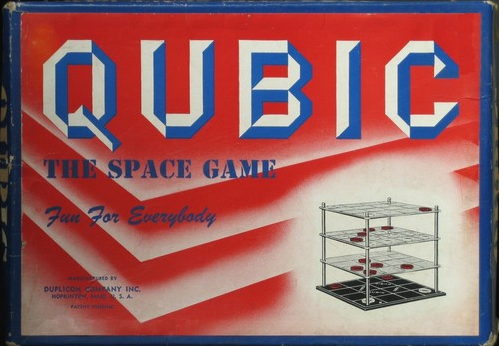Section 5.1 Combinatorial Lines
Last year I went fishing with Salvador Dali. He was using a dotted line. He caught every other fish. — Steven Alexander Wright, American comedian, actor and writer, 1955–
Alphabet. For \(m\in \mathbb{N}\text{,}\) any set \(A\) such that \(|A|=m\) is called an alphabet on \(m\) symbols.
Example 5.1.1.
Let \(A=\{a,1,\triangle\}\text{.}\) Then \(A\) is an alphabet on \(|A|=3\) symbols.
Words. Let \(A\) be an alphabet on \(m\) symbols. For \(n\in\mathbb{N}\text{,}\) any function \(w:[1,n]\to A\) is called a word of length \(n\) on the alphabet \(A\text{.}\) If \(w(i)=a_i\text{,}\) \(i\in[1,n]\) then we write
The set of all words of length \(n\) on the alphabet \(A\) is denoted by \(A^n\text{.}\) We say that \(A^n\) is the \(n\)-dimensional cube on alphabet \(A\).
Example 5.1.2.
Let \(A=\{a,1,\triangle\}\) be an alphabet on three symbols. Then \(w=a1a1a1\) is a word of length 6 on the alphabet \(A\text{.}\) Here \(w:[1,6]\to A\) is defined as \(w(1)=w(3)=w(5)=a\) and \(w(2)=w(4)=w(6)=1\text{.}\)
Also, \(A^2=\{w:w:[1,2]\to A\}=\{aa,a1,a\triangle, 1a,11,1\triangle,\triangle a,\triangle 1, \triangle\triangle\}\text{.}\)
Roots. Let \(A\) be an alphabet (on \(m\) symbols) and let \(\ast\) be a symbol such that \(\ast\not\in A\text{.}\) We consider the alphabet \(A_\ast=A\cup\{ \ast\}\text{.}\) Any word on the alphabet \(A_\ast\text{,}\) i.e, any element of \((A_\ast)^n=A_\ast^n\text{,}\) for some \(n\in \mathbb{N}\text{,}\) that contains the symbol \(\ast\) is called a root.
Example 5.1.3.
Let \(A=\{a,1,\triangle\}\) be an alphabet on three symbols. Then \(A_\ast=A\cup\{\ast\}=\{a,1,\triangle\,\ast\}\text{.}\) By definition, \(1\ast\triangle\) and \(a\ast a \ast\) are two roots.
Words From Roots. For a root \(\tau \in A_\ast^n\) and a symbol \(a\in A\) we define the word \(\tau_a\in A^n\) in the following way. For \(i\in [1,n]\)
Example 5.1.4.
Let \(A=\{ a,b,c\}\) and let \(\tau = \ast \ b \ c \ b \in A_\ast ^4\) be a root. Then
Example 5.1.5.
Example: Let \(A=[1,4]\) and let \(\tau = \ast \ 1 \ 3 \ \ast \ 4 \ \ast \in A_\ast ^6\) be a root. Then
Combinatorial Line: Let \(A\) be an alphabet, let \(n\in \mathbb{N}\text{,}\) and let \(\tau \in A_\ast^n\) be a root. A combinatorial line in \(A^n\) rooted in \(\tau\) is the set of words
Observation 5.1.6.
\(L\tau \subseteq A^n\text{.}\)
Example 5.1.7.
Let \(A=\{1,2,3\}\) and \(n=2\text{.}\) Find all combinatorial lines in \(A^2\text{.}\)
-
All roots in \(A_\ast^2\text{:}\)
\begin{align*} \tau \amp =\amp \ast \ 1\\ \sigma \amp =\amp \ast \ 2\\ \theta \amp =\amp \ast \ 3\\ \rho \amp =\amp 1\ \ast\\ \chi \amp =\amp 2 \ \ast\\ \phi \amp =\amp 3 \ \ast\\ \mu \amp =\amp \ast \ \ast\text{.} \end{align*} -
All combinatorial lines:
\begin{align*} L_\tau \amp =\amp \{ 1 \ 1, 2 \ 1, 3 \ 1\}\\ L_\sigma \amp =\amp \{ 1 \ 2, 2 \ 2, 3 \ 2\}\\ L_\theta \amp =\amp \{ 1 \ 3, 2 \ 3, 3 \ 3\}\\ L_\rho \amp =\amp \{ 1 \ 1, 1 \ 2, 1 \ 3\}\\ L_\chi \amp =\amp \{ 2 \ 1, 2 \ 2, 2 \ 3\}\\ L_\phi \amp =\amp \{ 3\ 1, 3 \ 2, 3 \ 3\}\\ L_\mu \amp =\amp \{ 1 \ 1, 2 \ 2, 3 \ 3\}\text{.} \end{align*}
All combinatorial lines - Another view:
All combinatorial lines - Another view (see Figure 5.1.8):
It looks like… (See Figure 5.1.9.)
Example 5.1.10.
What About Combinatorial Lines in \([1,3]^3\text{?}\)
Consider roots:
Then (also see Figure 5.1.11):
\(4\times 4\times 4\) Tic-Tac-Toe
This is just a 2-player Tic-Tac-Toe game on a 4 x 4 x 4 cube. The player wins who first gets four in a row of his own pieces - either horizontal, vertical, or diagonal. See Figure 5.1.12. (Source BoardGameGeek.)

Rules of the Game. Create a monochromatic combinatorial line in \([1,4]^3\text{.}\)
Question 5.1.13.
Let \(A\) be an alphabet on \(m\) symbols and let \(A^n\) be the \(n\)-dimensional cube on alphabet \(A\text{:}\)
If \(A^n\) is \(k\)-coloured, can we be sure that \(A^n\) contains a monochromatic combinatorial line?
More precisely … Let \(m,k\in \mathbb{N}\) and let \(A\) be an alphabet on \(m\) symbols. Does there exist an \(n\in \mathbb{N}\) such that whenever \(A^n\) is \(k\)-coloured there exists a monochromatic line? See Figure 5.1.14.